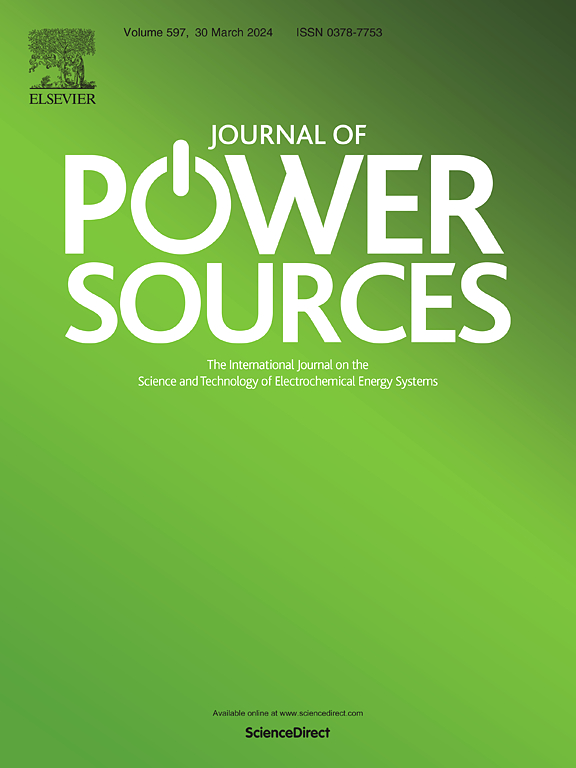The enthalpic reaction limits of Li-ion battery chemistries within various operating regimes and environments
IF 8.1
2区 工程技术
Q1 CHEMISTRY, PHYSICAL
引用次数: 0
Abstract
Ensuring the safety of Li-ion battery packs is crucial due to their widespread use in various applications. Li-ion batteries fail catastrophically, and dense packaging increases the risk of failure propagation. To design safe battery packs that prevent propagating failures, the energetics of battery failure must be well-defined for the operating conditions and selected battery chemistry. Experimental failure testing of every battery chemistry and cell size is cumbersome and labor-intensive. This study theoretically calculates failure energetics for: (i) closed failures and (ii) open failures. Calculations are based on the component masses within the cell, including the cathode, anode, and electrolyte. Failure Energies (kJ) are normalized and reported based on the Electrical Energy content (kJ) of the cell, RFE/EE. The calculated RFE/EE values for a lithium iron phosphate (LFP) battery are (i) 1.10 and (ii) 21.76, which agree with experimental studies. For open system failures, the calculated RFE/EE for the nickel manganese cobalt (NMC) cell is 13.85 and for the lithium cobalt oxide/NMC (LCO/NMC) cell it is 10.21. While the LFP chemistry is considered safe, its safety is highly dependent on the failure conditions making it critical to keep Li-ion battery packs in inert enclosures to diminish the severity of failure.

求助全文
约1分钟内获得全文
求助全文
来源期刊

Journal of Power Sources
工程技术-电化学
CiteScore
16.40
自引率
6.50%
发文量
1249
审稿时长
36 days
期刊介绍:
The Journal of Power Sources is a publication catering to researchers and technologists interested in various aspects of the science, technology, and applications of electrochemical power sources. It covers original research and reviews on primary and secondary batteries, fuel cells, supercapacitors, and photo-electrochemical cells.
Topics considered include the research, development and applications of nanomaterials and novel componentry for these devices. Examples of applications of these electrochemical power sources include:
• Portable electronics
• Electric and Hybrid Electric Vehicles
• Uninterruptible Power Supply (UPS) systems
• Storage of renewable energy
• Satellites and deep space probes
• Boats and ships, drones and aircrafts
• Wearable energy storage systems
 求助内容:
求助内容: 应助结果提醒方式:
应助结果提醒方式:


